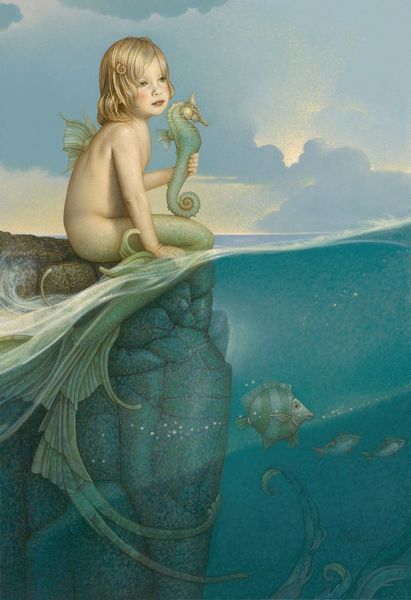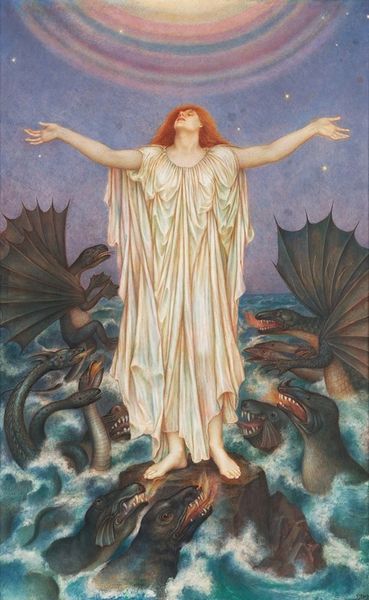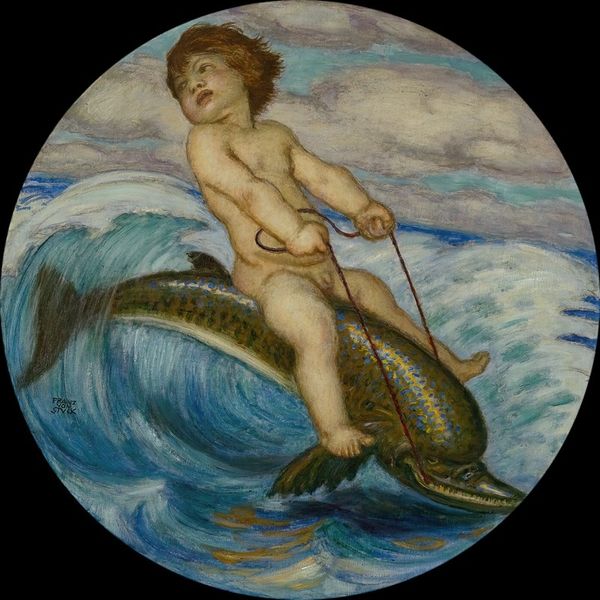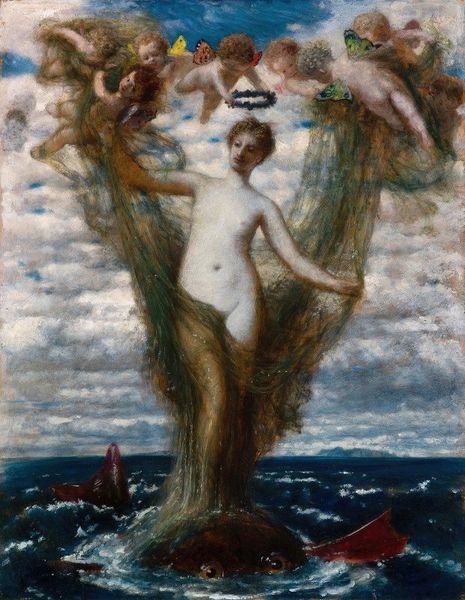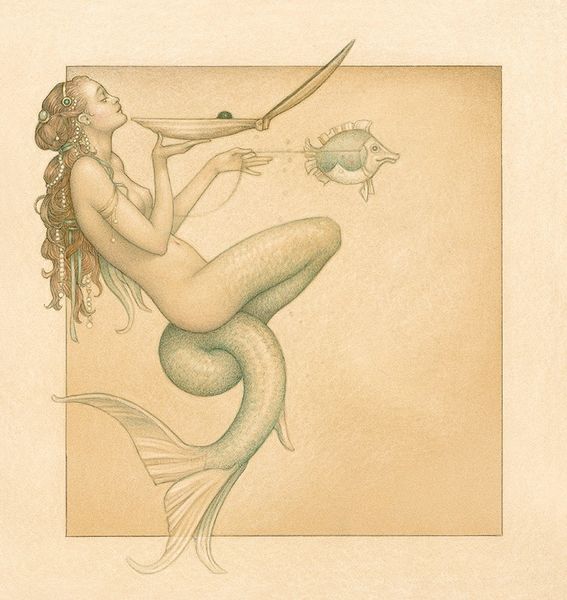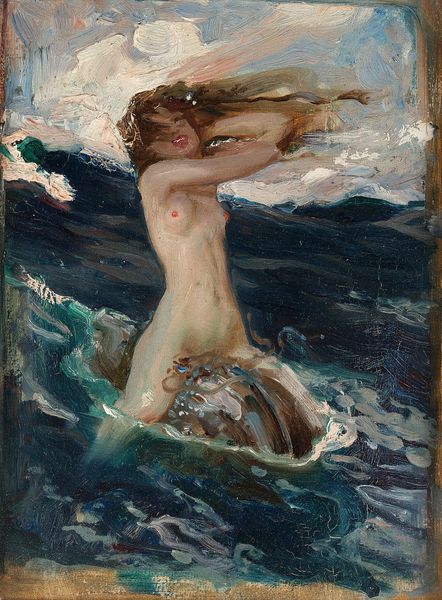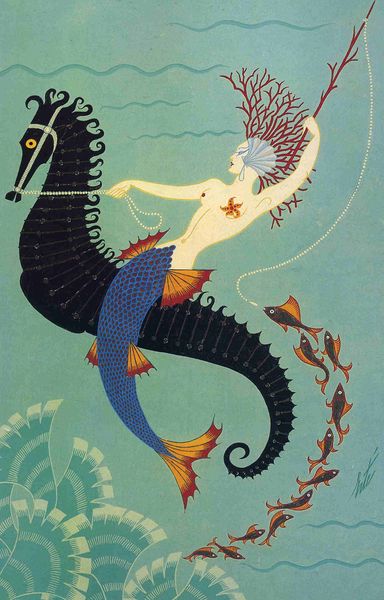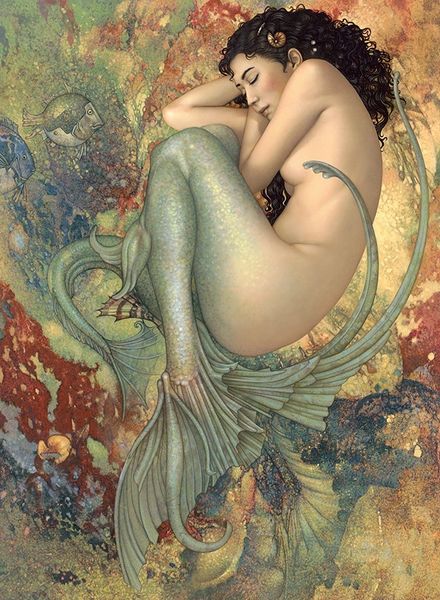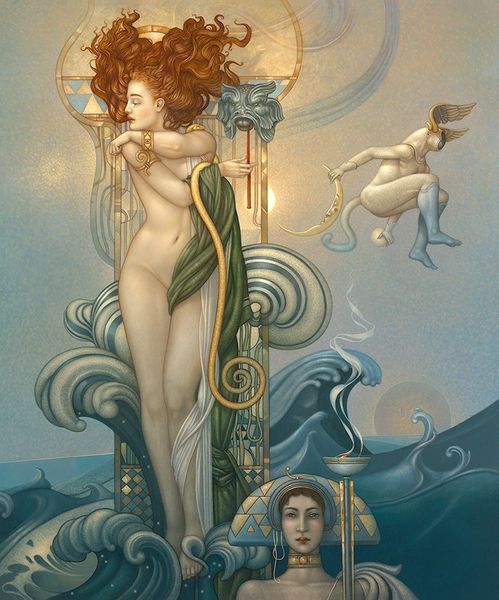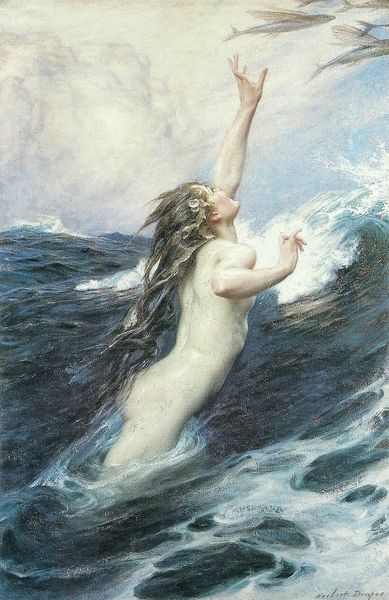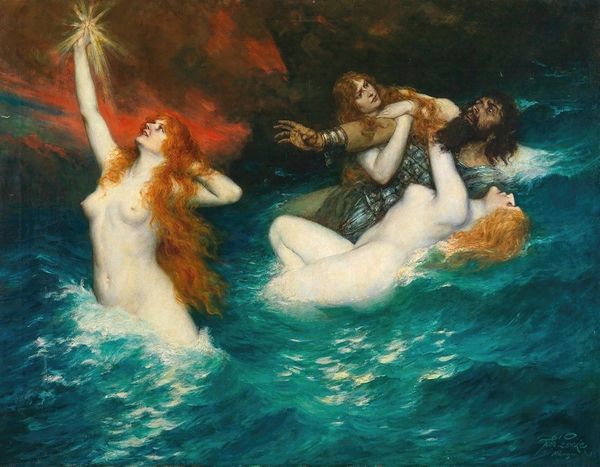
Copyright: Public Domain: Artvee
Editor: This is "A Sea-Nymph," painted by Edward Burne-Jones in 1881, using oil paints. It’s striking how…stark the mermaid appears, especially with the strangely lifeless fish. What can you tell us about this work? Curator: The painting carries a palpable sense of melancholic beauty characteristic of Burne-Jones and the Pre-Raphaelites. Consider the fish. How might we interpret their symbolic weight here? One alive, one…well, perhaps in the throes of death, another skeletal head in her left hand. They seem almost offered, presented. Editor: Are you suggesting these are offerings to… or from… the nymph? Her expression is so hard to read. Curator: Precisely. The visual language asks us to consider cycles of life and death. Mythological figures often embody larger elemental forces. She isn't just a mermaid; she is a personification of the sea itself – capable of both creation and destruction. The living fish perhaps a bounty offered while the skeletal one implies decay. It’s interesting to me how that contrasts with our common, Disneyfied, version of mermaids. Editor: I’d never considered the duality. Her red hair is gorgeous, yet the fish present an unsettling contrast, suggesting that beauty can have a darker, predatory side? Curator: Precisely. Red hair itself has long held complex connotations, often tied to passion but also danger, even witchcraft. And it really points to the period fascination of these artists with medieval symbols. This painting captures an unsettling but ultimately fascinating exploration of beauty, power, and mortality. The Pre-Raphaelites aimed to reinvest art with symbolic meaning drawn from historical memory, and that really comes through. Editor: That gives me so much to think about regarding the Victorian era and how they perceived mythological figures! I'll definitely remember this painting differently now.
Comments
No comments
Be the first to comment and join the conversation on the ultimate creative platform.

